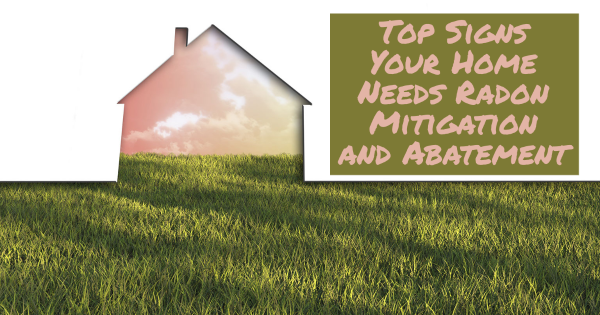Radon is the second leading cause of lung cancer in America. In fact, according to the American Cancer Society, approximately 20,000 cancer cases a year are attributed to radon. It’s a gas that can seep into your home from the ground and contaminate your indoor air. And it’s not just an urban problem because radon can come from any type of soil or rock. But there are simple steps you can take to protect yourself and your family—and they don’t need to be expensive ones! Below we outline some signs that you may have a radon issue and need radon mitigation and abatement.
1. Radon Levels Are High
If you test your home with a radon detection kit, and the result is 4 pCi/L or greater, this means that your home needs mitigation. The EPA recommends taking action if the level in your home is above 2.7 pCi/L—but mitigation may be recommended even at lower levels.
2. You’re Buying A Home In An Area With High Radon Levels
If you’re thinking of purchasing a home, ask your realtor or seller for the results of any radon testing done in recent years. This is especially important if you are considering purchasing an older home in an area where the soil is known to have high levels of radon.
3. The Home Was Previously Tested, And No Mitigation Was Done
If you purchased a radon-tested home, and the radon level is still 4 pCi/L or greater, this may mean that radon mitigation has not been done. Or, if radon mitigation has been performed, then it wasn’t done correctly. That means radon may still be an issue, and you’ll need radon mitigation and abatement.
4. All Homes In The Neighborhood Have Tested At High Levels For Radon
If you live in an area where radon levels are typically high, it’s a good idea to test your home for radon. If all homes in the neighborhood have tested positive at 4 pCi/L or higher, then radon mitigation is likely needed.
5. Your Home Has Cracks Or Openings In The Foundation Or Basement Floor
These kinds of openings and cracks make it easier for radon gas to get into your home, so you should get a test done. If radon is detected, mitigation and abatement may be needed.
If your home has any of these signs, it is important that you test your home for this very common carcinogen. If radon levels are high, you’ll need radon mitigation and abatement. However, it is important to have it done by a professional because radon issues can be a serious hazard.


Recent Comments